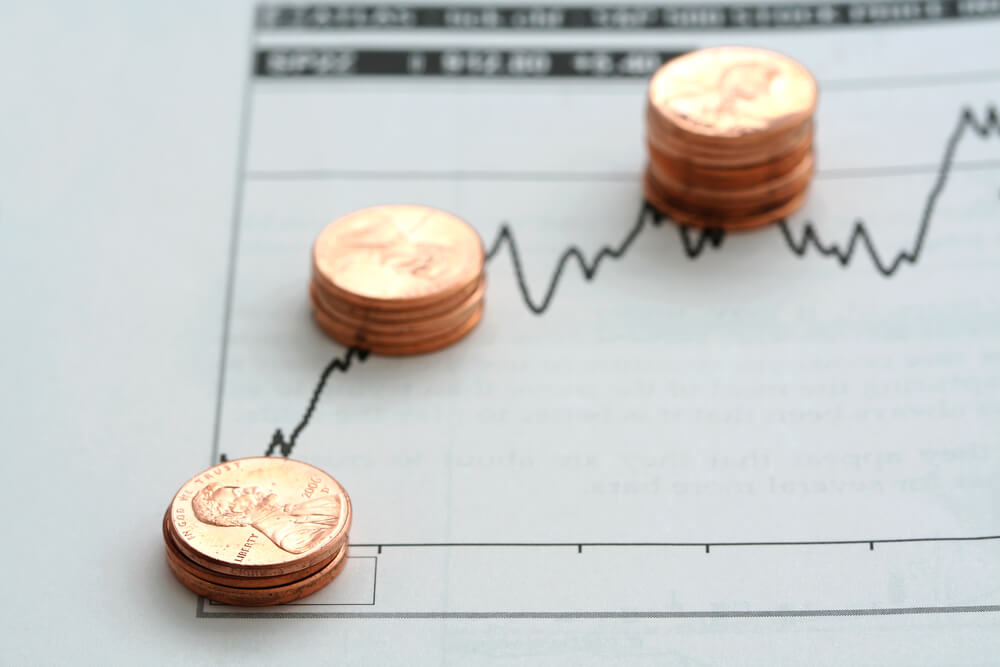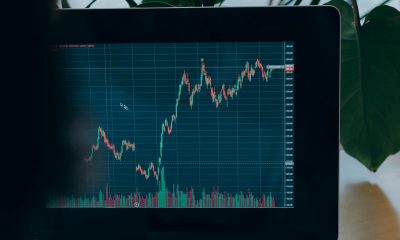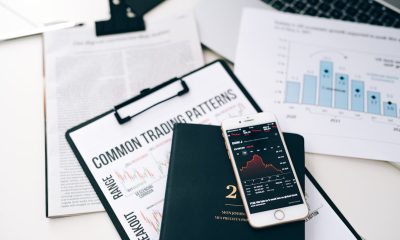Featured
3 ways to know your stock is recession-proof
There’s a lot of speculations as to a recession happening very soon. Here’s how to check if your stocks are recession-proof.

If you have been reading the news lately, it seems like everyone is talking as if the recession is just around the corner. The markets have been down and with so much uncertainty going on in U.S. politics, this has translated into more turbulence on the financial markets.
During times like this, it is important to check how recession-proof your stocks are. That means going through the financial statements of the companies you own.
During recessionary periods, sales tend to slow, and this puts pressure on operating cash. Pressures on operating cash do not look good on publicly traded stocks. So what investors should review is look at the company’s ability to cover short term liabilities such as interest payments, suppliers, and day to day operations.
General Electric (GE) is an excellent example of a company that over leveraged and is now in financial trouble. A lot of investors lost money in GE when it was discovered a lot of its businesses are actually not as sound as previously thought. The company borrowed heavily in the past as it expanded into different lines of business.
In the past year, it has been trying to sell some of its businesses and have even slashed its dividends to conserve cash. Recessionary periods tend to hit companies like GE particularly hard so it is important to check if the stocks you hold are recession proof.
Here are three ratios to use to analyze the health of your investments:
-
Quick ratio
-
Debt ratio
-
Interest coverage ratio
To find the company’s financial statements, check out the SEDAR or go to the company website. Generally, there is a section called “Investor Relations”.
Quick ratio
Formula: (Cash Equivalents + Marketable Securities + Accounts Receivables) / Accounts Payable
This ratio calculates the liquidity of the company and determines how well it can pay its short term obligations. If the ratio is a 2 or better than the company is financially sound. Generally, the higher the ratio the better company’s liquidity position.
For GE’s Q3-2018 financials, its quick ratio is: 1.36 (=$96.1 / $70.4)
Cash: $26.9 million
Investment Securities: $34.7 million
Receivables – Net: $34.5 million
Net Current Assets: $96.1 million
Short-Term Borrowings: $15.2 million
Accounts Payable: $15.7 million
Other Current Liabilities: $39.5 million
Net Current Liabilities: $70.4 million
GE ratio of 1.36 shows it is below the comfortable threshold of 2.0, this partially explains why the company decided to scale back its dividends as it is trying to raise cash for its working capital.

General Electric is the perfect example of a company that overleveraged and is in financial trouble. (Photo by Momoneymoproblemz via Wikimedia Commons. CC BY-SA 3.0.)
Debt ratio
Formula: Total Debt / Total Assets
The debt ratio calculates how much of the company is being financed by debt. A company that borrows too much will saddle the company with huge annual interest payments and this raises the risk defaulting on their loans
For GE, its debt ratio is: 84.5% ($263,468 million / $311,691 million)
Total Liabilities: $263,468 million
Total Assets: $311,691 million
GE ratio of 84.5% is really high. This means that while the book value of the company is worth $311,691 million, 84.5% or $263,468 million is financed from debt.
Interest rate coverage ratio
Formula: Company’s Earnings Before Interest and Taxes (EBIT) / Interest Expense
This figure determines how easily the company can pay its interest expense on its outstanding debts. The lower the ratio, the more the debt is a burden on the company. Generally, if the ratio is at 1.5 or lower than this raises alarm bells
For GE, its interest rate coverage ratio is: 1.51 ($5,365 million / $3,545 million)
Earnings Before Taxes: $1,820 million
Interest Expenses: $3,545 million
Earnings Before Taxes and Interest: $5,365 million
GE’s interest rate expense is rather large compared to its total revenue. This shows that the company’s operations are burdened heavily by its loan commitments.
These ratios help tell the story and explains how well the company is financed, however looking at the financials has a few setbacks. One of them is financial statements are backward looking. Even the latest financial statements can be a few months old so investors are working with outdated data.
Another caveat to ratio analysis is industry averages are different for one industry to another. For example: a utility company may have a lower quick ratio but it doesn’t mean the company is at risk of default. While a startup company may show really high quick ratios because it recently raised its cash through debt / equity but the company isn’t making money yet. So there are quite a few things to consider when looking at ratios.
In any case, doing ratio analysis helps investors understand the companies they invest. Also, it may reveal certain things to investors that otherwise, the general public may not know about until they read through the financial statements.
(Featured image by DepositPhotos)
—
DISCLAIMER: This article expresses my own ideas and opinions. Any information I have shared are from sources that I believe to be reliable and accurate. I did not receive any financial compensation for writing this post, nor do I own any shares in any company I’ve mentioned. I encourage any reader to do their own diligent research first before making any investment decisions.

-

 Business2 weeks ago
Business2 weeks agoPrecious Metals’ Bull Market Continues
-

 Impact Investing22 hours ago
Impact Investing22 hours agoChristmas Plastic Waste and the Path to Circular, Low-Emission Solutions
-

 Africa1 week ago
Africa1 week agoOil Dependence and Economic Resilience: Morocco’s Path to Sustainable Growth
-

 Africa5 days ago
Africa5 days agoBantuHub and L’Archer Group Partner to Invest €1 Million in Congolese Startups

























You must be logged in to post a comment Login